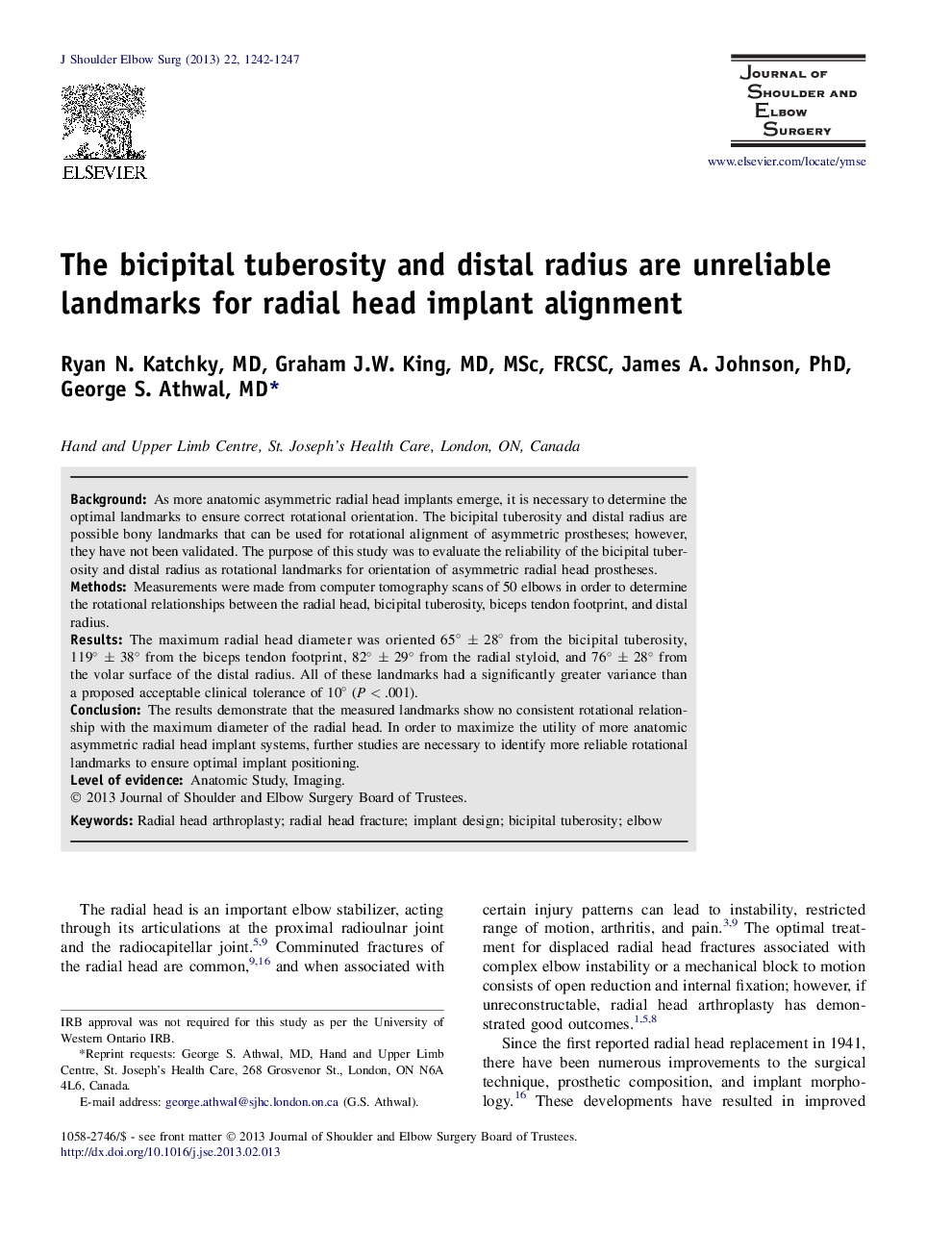| کد مقاله | کد نشریه | سال انتشار | مقاله انگلیسی | نسخه تمام متن |
|---|---|---|---|---|
| 4073607 | 1266985 | 2013 | 6 صفحه PDF | دانلود رایگان |

BackgroundAs more anatomic asymmetric radial head implants emerge, it is necessary to determine the optimal landmarks to ensure correct rotational orientation. The bicipital tuberosity and distal radius are possible bony landmarks that can be used for rotational alignment of asymmetric prostheses; however, they have not been validated. The purpose of this study was to evaluate the reliability of the bicipital tuberosity and distal radius as rotational landmarks for orientation of asymmetric radial head prostheses.MethodsMeasurements were made from computer tomography scans of 50 elbows in order to determine the rotational relationships between the radial head, bicipital tuberosity, biceps tendon footprint, and distal radius.ResultsThe maximum radial head diameter was oriented 65° ± 28° from the bicipital tuberosity, 119° ± 38° from the biceps tendon footprint, 82° ± 29° from the radial styloid, and 76° ± 28° from the volar surface of the distal radius. All of these landmarks had a significantly greater variance than a proposed acceptable clinical tolerance of 10° (P < .001).ConclusionThe results demonstrate that the measured landmarks show no consistent rotational relationship with the maximum diameter of the radial head. In order to maximize the utility of more anatomic asymmetric radial head implant systems, further studies are necessary to identify more reliable rotational landmarks to ensure optimal implant positioning.
Journal: Journal of Shoulder and Elbow Surgery - Volume 22, Issue 9, September 2013, Pages 1242–1247